The loudness war began with the assumption: the louder, the better. It’s a catchy thing to say, and it certainly changed the music and broadcasting industry a lot. But when it comes to audio, nothing is that simple – ever.
Loud noises draw our attention and loud songs often sound punchier. This realization basically started a war on listeners’ ears: the loudness war. It caused labels, artists and music producers from 1990 to 2010 to outdo each other in the overall loudness of their tracks and albums. Guns and Roses’ album “Appetite for Destruction” or Metallica’s “Death Magnetic” are prominent examples that are mentioned in the same breath when it comes to the loudness war.
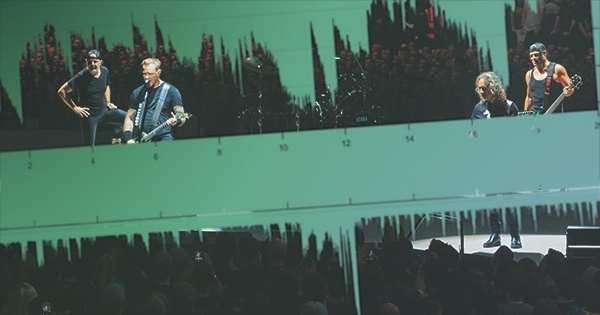
Credit: a derivative of “Metallica Live at The O2, London, England, 22 October 2017” by Kreepin Deth, used under CC BY-SA 4.0
And this war wasn’t only raging in the music industry. The broadcasting industry also used the attention-grabbing method of increased loudness, making people jump up and reach for their remote control in order to turn the volume down whenever commercials started.
In and of themselves, great tools like compressors and limiters were used in excess to reduce the dynamic range and crank up the overall loudness of a track.
But, with time, the critical voices of both mastering engineers and artists also grew louder. Some pointed out that the level of certain songs, LPs and CD recordings had reached the point where one could hear distortion. Others warned that the severe reduction of dynamic range was a development that caused listeners to prefer a track because of its volume – a very short-lived attraction – rather than its expressiveness, pleasant balance and musicality. Audiences also started complaining increasingly about the loudness of commercials. Furthermore, being the weapon of choice in the loudness war, audio compressors fell into disrepute.
As the complaints and criticism grew louder, some countermeasures were initiated.
For example, in 2010 the US congress empowered the FCC to set and monitor the loudness of commercials with the CALM-Act. A standard was chosen: the ITU-R BS.1770 loudness standard. It introduced the measurement unit LKFS and the required value for broadcasting is -24. The European Broadcasting Union modified this standard which resulted in new units, one of them being LUFS (loudness units full scale). Today LKFS and LUFS are identical but both abbreviations are in use.
In contrast to peak value, which was the only important measurement in the early digital era, the ITU standard uses – amongst others – the RMS value in the LUFS/LKFS measuring method rather than the peak value. Why so? Because the time aspect is crucial when it comes to perceived loudness since our ears employ an integration time of 100 ms for loudness and the RMS level is a value of the average signal level over time.
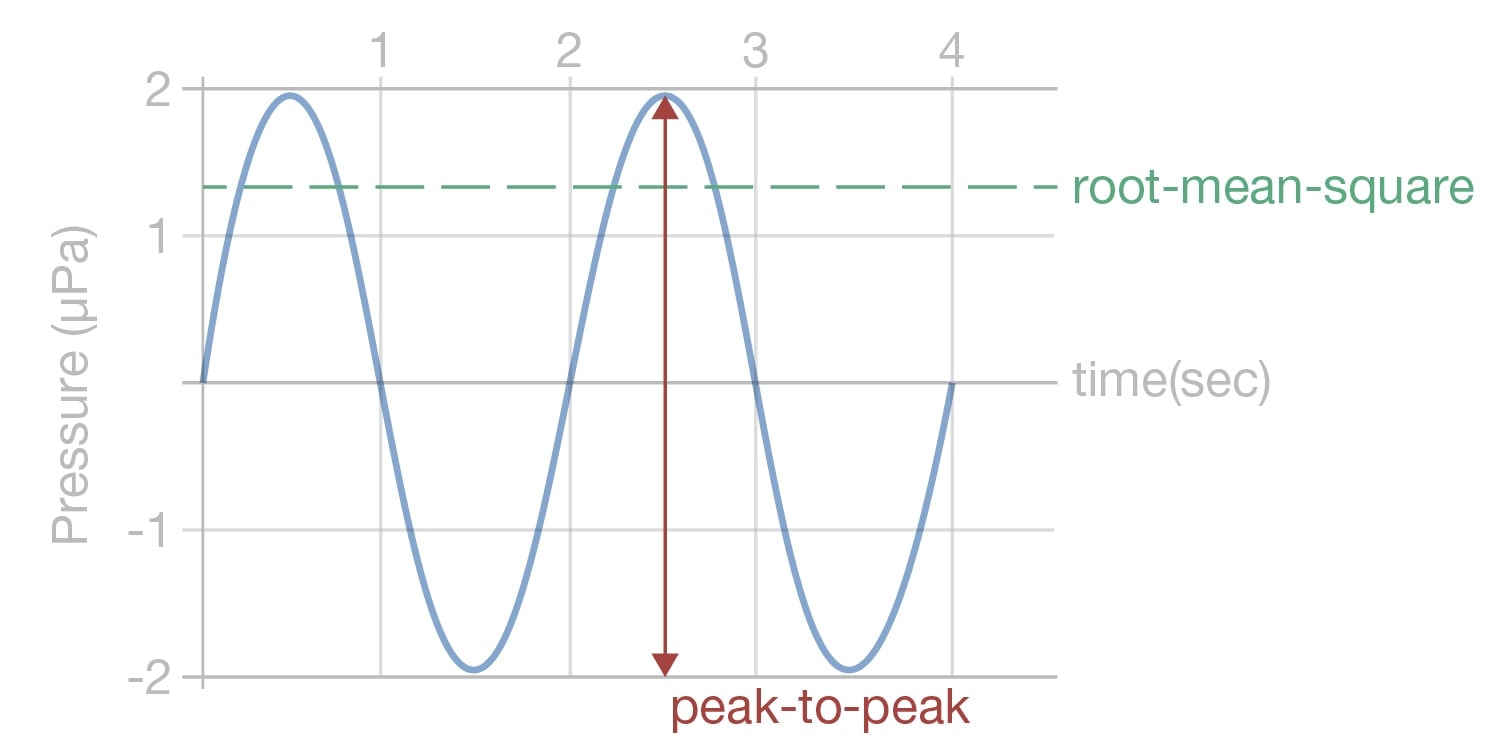
Eventually, industry regulations began to appear requiring producers to provide tracks with a specific LUFS value and a maximum true peak.
Now, many online streaming platforms employ the LUFS measuring standard. For example, if a song is uploaded to Spotify that does not conform with the site’s integrated LUFS of -14, its volume will be either lowered or raised accordingly. Although streaming platforms are an important example, generally speaking the effort to regulate volume and promote consistency seems to have worked out much better in the broadcasting industry than in the music industry.
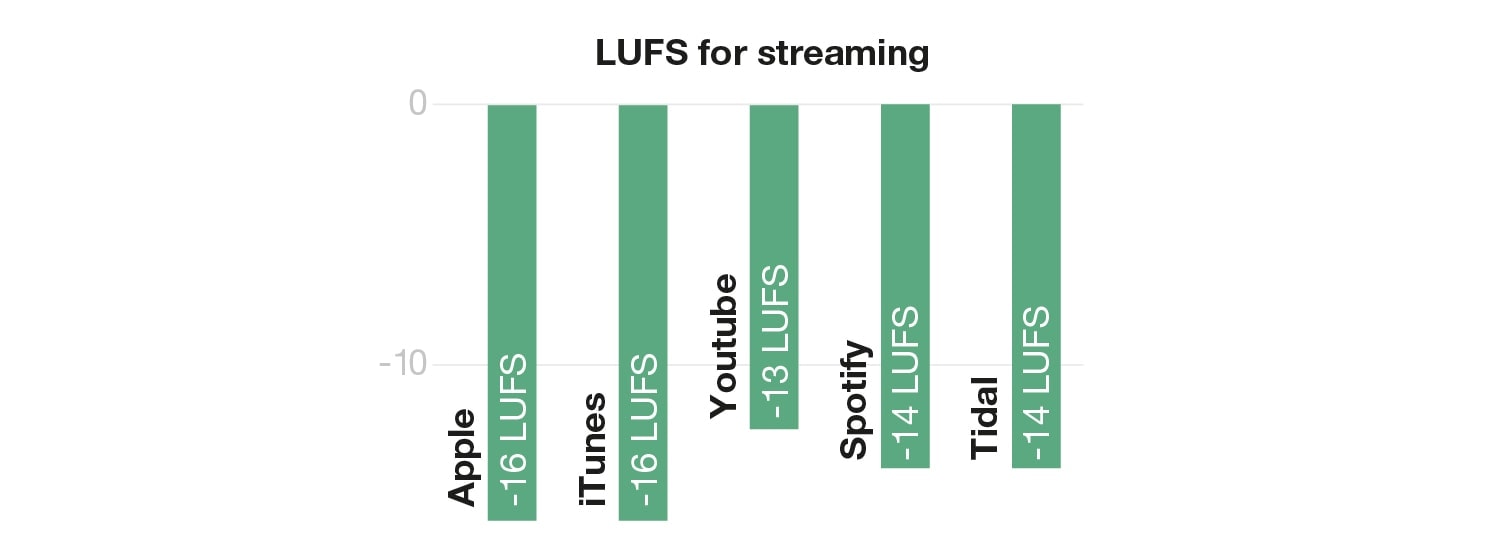
We are subject to psychoacoustics. Equal-loudness contours show how human ears perceive signal levels at different frequencies. For example, sounds in the high-mid range are perceived louder than frequencies in other ranges even when their metered levels are the same. Harvey Fletcher and Wilden A. Munson were the first to explore the topic of perceived loudness. They published the Fletcher-Munson diagram in 1933 and with it initiated further research in this area. Today, the Fletcher-Munson curves are a sub-set of the equal-loudness contours. With their approach of taking the nature of human hearing into consideration, these two men caused a fundamental rethinking of loudness versus volume.
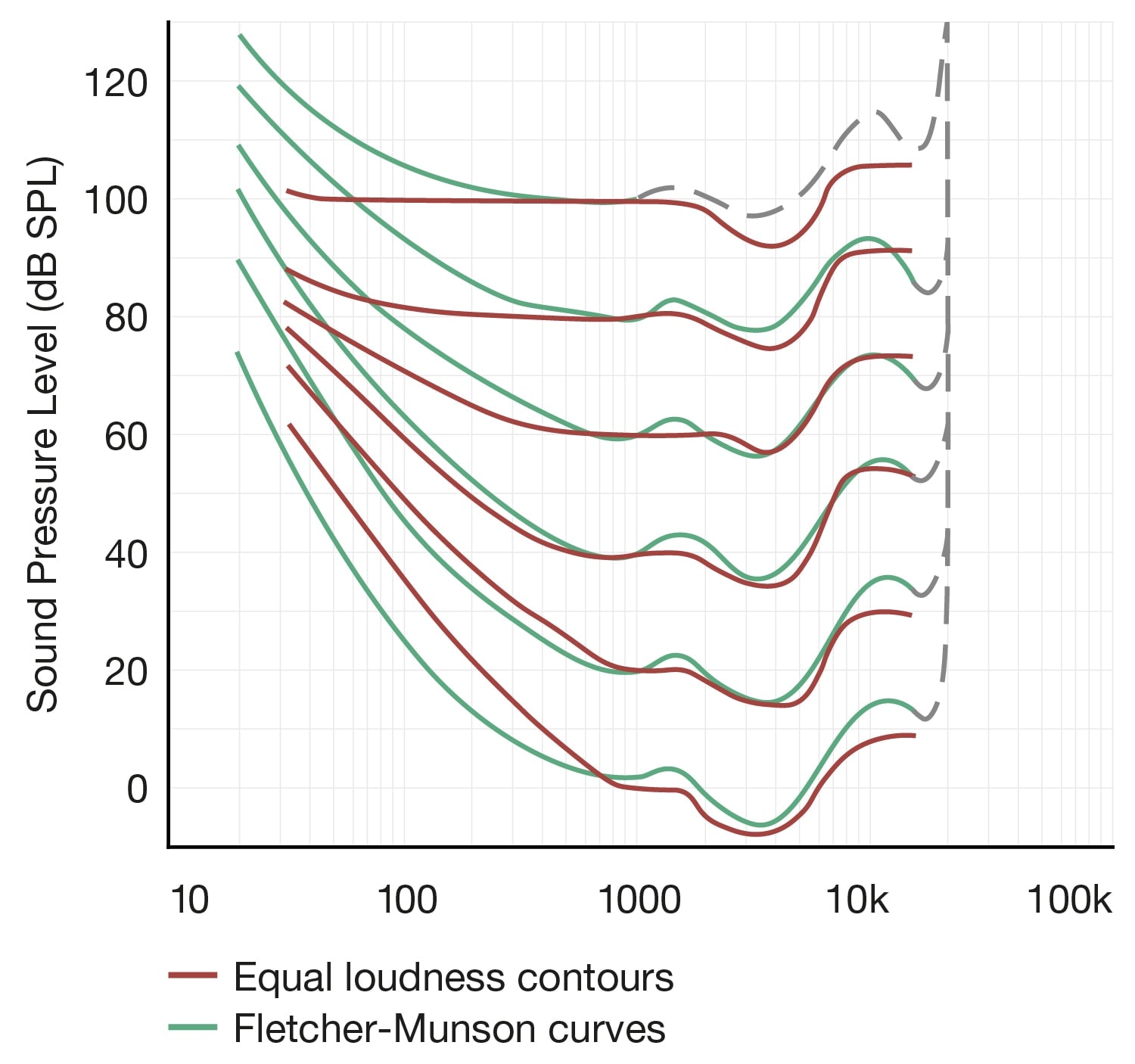
The loudness metering algorithm behind LUFS is designed to correlate very closely with human perception. Amongst others, it includes K-weighting, which incorporates equal-loudness contours, as well as audio channel weighing.
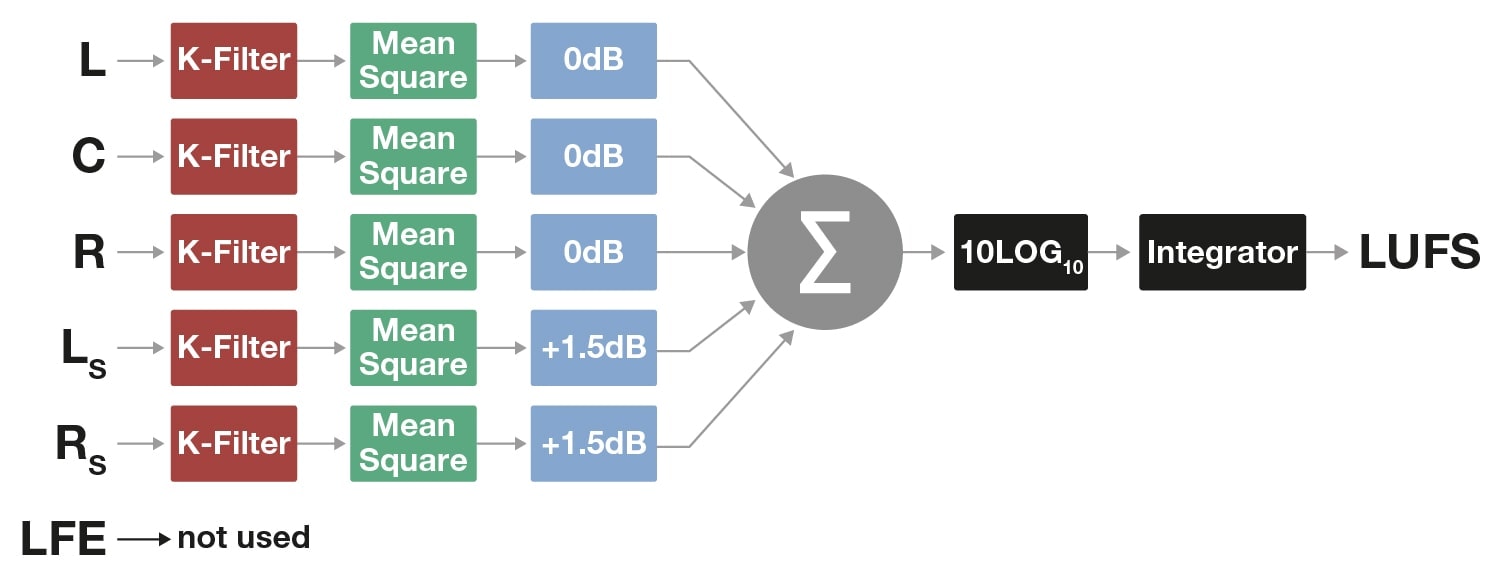
We produce music, podcasts, commercials etc. for human ears. Hence, it’s smart to take our perception into account whenever we are manipulating audio signals – or creating new audio related standards, products, guidelines, etc… that’s why the algorithm of our smart:EQ and smart:comp also contains the parameters of psychoacoustic principles.
Note: We replaced smart:comp with smart:comp 2! The spectro-dynamic compressor now sports sound-shaping option, an entire range of new profiles (single tracks, buses, mixes), a free-form transfer function with compression templates, states, mid/side processing, … and much more.